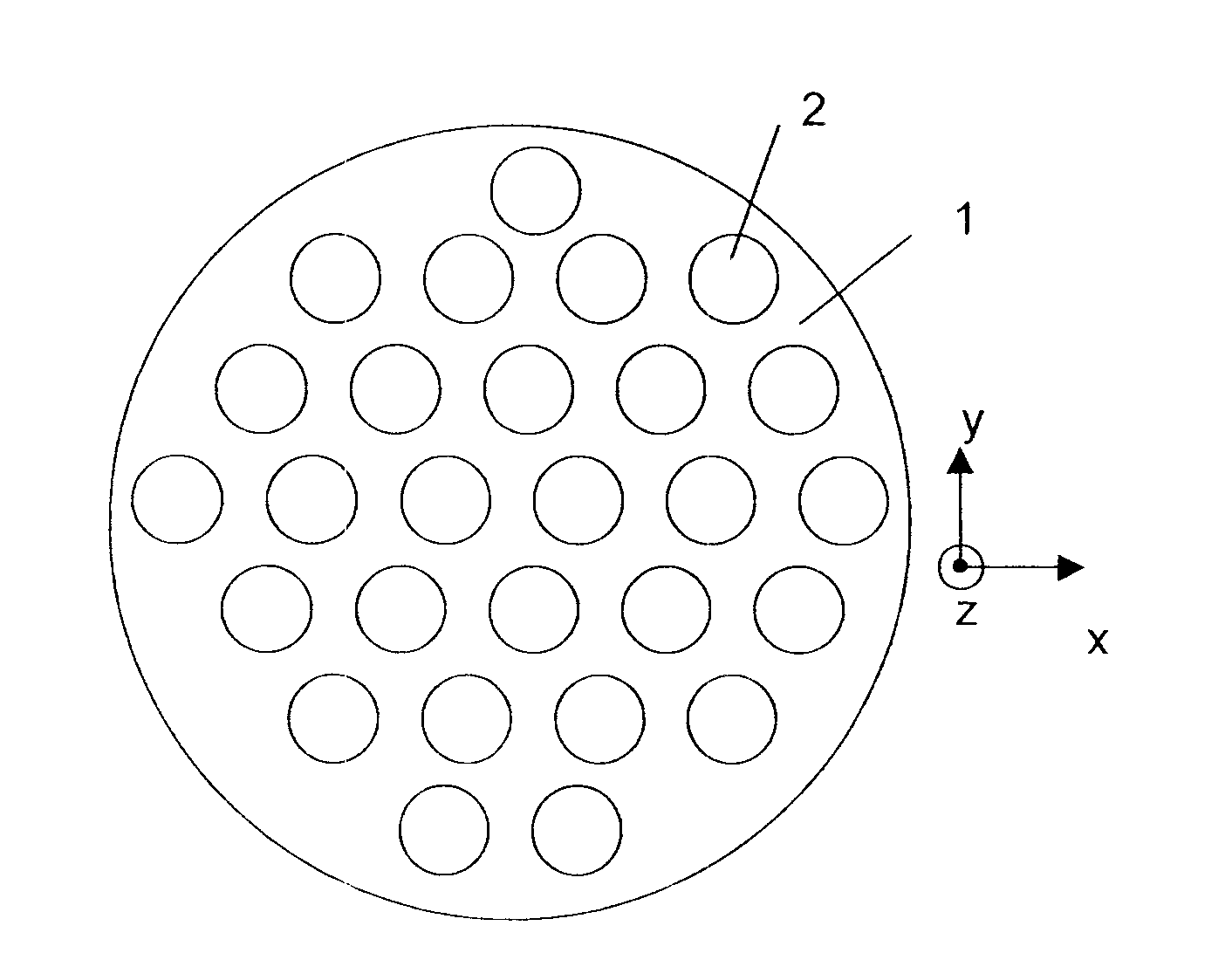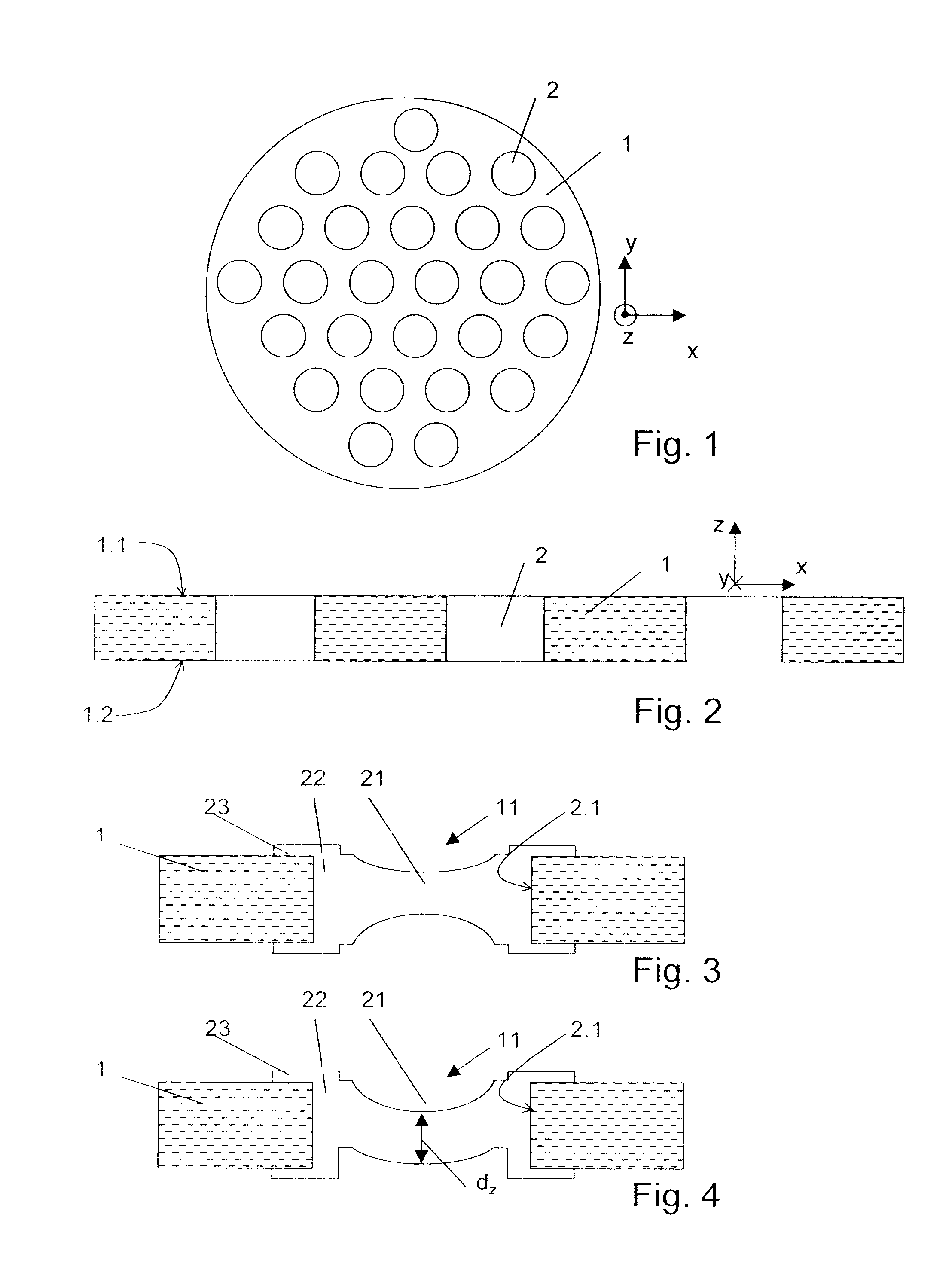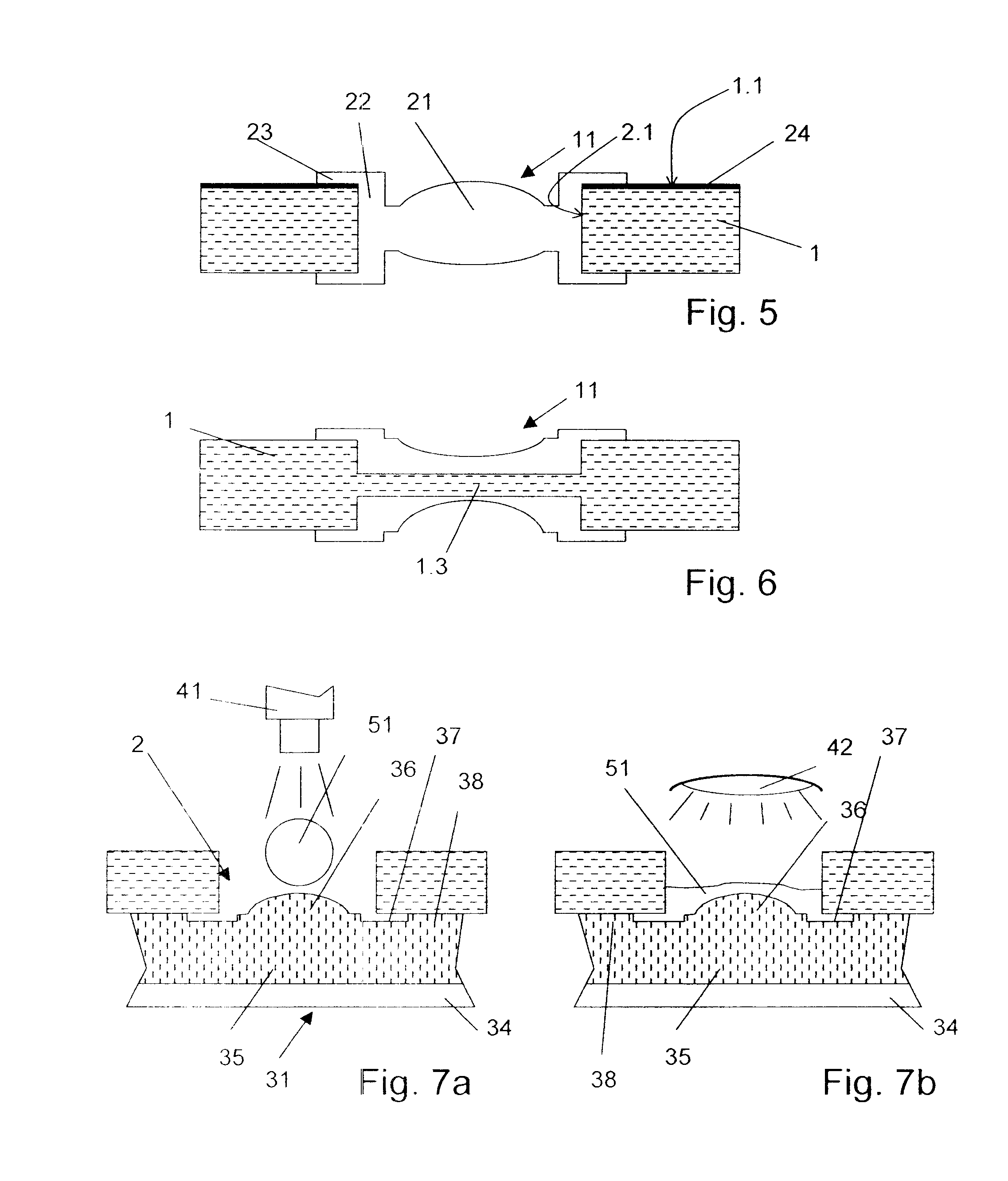Manufacturing optical elements
a technology of optical elements and manufacturing methods, applied in the direction of optics, mountings, lenses, etc., can solve the problems of limited optical design, inability to manufacture lenses on two sides of wafer scale substrates, and inability to meet the so as to reduce the influence of optical properties of optical elements
- Summary
- Abstract
- Description
- Claims
- Application Information
AI Technical Summary
Benefits of technology
Problems solved by technology
Method used
Image
Examples
Embodiment Construction
[0055]The substrate 1 schematically depicted in FIG. 1 is essentially flat with a plurality of replication sites defined by holes 2 in the substrate. Preferably, the substrate is wafer-scale. The arrangement of the holes on a large surface may be in a regular pattern to ease subsequent process steps such as dicing (dividing the optical assembly after replication, and potentially after further method steps such as stacking with other wafer-scale elements, into the individual elements).
[0056]The substrate used for the different embodiments of the invention may be transparent. It may be made of glass or of an organic or inorganic plastic material or of any suitable transparent material providing sufficient dimensional stiffness.
[0057]The substrate, according to an alternative, may be nontransparent. Especially, the substrate, if the replication sites are defined by through holes, may even be nontransparent in case the manufactured optical elements are lenses. A nontransparent substrate...
PUM
 Login to View More
Login to View More Abstract
Description
Claims
Application Information
 Login to View More
Login to View More - R&D
- Intellectual Property
- Life Sciences
- Materials
- Tech Scout
- Unparalleled Data Quality
- Higher Quality Content
- 60% Fewer Hallucinations
Browse by: Latest US Patents, China's latest patents, Technical Efficacy Thesaurus, Application Domain, Technology Topic, Popular Technical Reports.
© 2025 PatSnap. All rights reserved.Legal|Privacy policy|Modern Slavery Act Transparency Statement|Sitemap|About US| Contact US: help@patsnap.com



